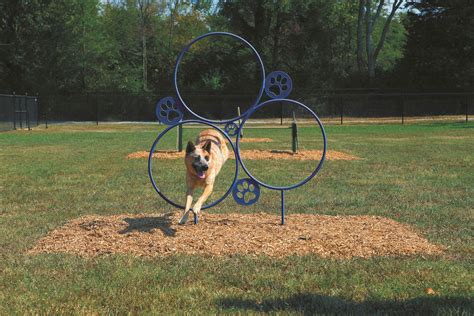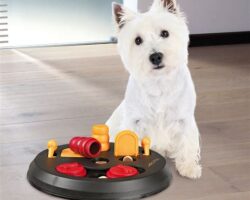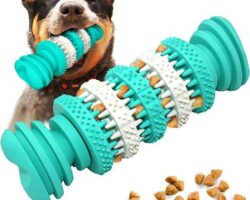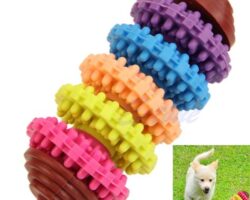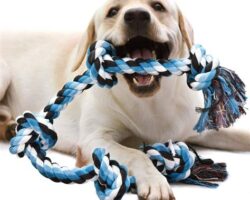In today’s fast-paced world, it’s crucial to ensure that our furry friends remain active and stimulated. Pet agility training offers a fantastic opportunity to channel their energy, strengthen the bond between pet and owner, and promote physical and mental well-being. But where do you start? This blog post will serve as a comprehensive guide, delving into the importance of pet agility training and providing essential tips on choosing the right accessories, building an agility course at home, and ensuring the safety of your pet. Additionally, we will explore effective training techniques and tracking your pet’s progress and improvement. Let’s dive in and create a vibrant and fulfilling training experience for your beloved companion!
The Importance of Pet Agility Training
Pet agility training is a crucial aspect of pet care that is often overlooked. Many pet owners may not fully understand the benefits and importance of agility training for their furry friends. In this blog post, we will delve into the reasons why pet agility training is so important and how it can enhance your pet’s overall well-being.
Firstly, agility training is a fantastic way to keep your pet physically active and fit. Regular exercise is essential for maintaining a healthy weight and preventing obesity in pets. Agility training involves various activities such as jumping over hurdles, weaving through poles, and navigating through tunnels, all of which require a great deal of physical effort. Engaging in these activities helps to improve your pet’s cardiovascular health, muscle strength, and overall agility.
Furthermore, agility training provides mental stimulation for your pet. Pets, especially dogs, are intelligent creatures that crave mental challenges. Agility training requires them to think, problem-solve, and make quick decisions based on the obstacles presented. This mental stimulation not only keeps their minds active but also prevents boredom and reduces the likelihood of destructive behaviors caused by boredom.
In addition, agility training fosters a strong bond between you and your pet. Training sessions become a shared experience that allows you to communicate and work together as a team. Through positive reinforcement and reward-based training methods, you can strengthen the trust and connection with your pet. This bond is essential not only for effective training but also for building a harmonious relationship and enhancing overall obedience in your pet.
To summarize, pet agility training is essential for numerous reasons. It helps to keep your pet physically fit, provides mental stimulation, and strengthens the bond between you and your furry friend. By incorporating agility training into your pet’s routine, you are not only improving their overall well-being but also ensuring a happy and fulfilling life for them. So, why wait? Start agility training today and witness the incredible benefits it brings to your beloved pet!
Choosing the Right Accessories for Agility Training
When it comes to agility training for pets, having the right accessories is essential for a successful and effective training session. The right accessories not only help in improving the performance of your pet but also ensure their safety. In this blog post, we will discuss the importance of choosing the right accessories for agility training and how they can make a difference in your pet’s training journey.
One of the most essential accessories for agility training is agility tunnels. These lightweight and flexible tunnels are not only fun for pets but also help improve their speed, agility, and confidence. They can be set up in various configurations to provide different levels of difficulty. Look for tunnels that are made of durable and sturdy materials to ensure they can withstand the rough play and constant use.
Jump hurdles are another important accessory for agility training. They help in training your pet to jump over obstacles with precision and control. Jump hurdles come in different heights and widths, allowing you to adjust the level of difficulty according to your pet’s abilities. It is important to choose hurdles that are stable and have adjustable heights, so they can grow with your pet’s progress.
| Accessory | Benefits |
|---|---|
| Pause table | Provides a platform for pets to pause during training and perform specific commands. |
| Tire jump | Helps in training pets to jump through a suspended tire, testing their agility and accuracy. |
| Weave poles | Teaches pets to navigate through a series of closely spaced poles, improving their agility and coordination. |
Pause tables are also a valuable accessory for agility training. They provide a platform for pets to pause and perform specific commands. This teaches them to stay focused and obedient during training sessions. Look for pause tables that are sturdy and have a non-slip surface to ensure your pet’s safety.
Tire jumps are another popular accessory in agility training. This accessory helps in training pets to jump through a suspended tire, testing their agility and accuracy. It is important to choose a tire jump that is durable and has adjustable heights, allowing you to increase the difficulty level as your pet progresses.
Weave poles are an excellent accessory for training pets to navigate through a series of closely spaced poles. This improves their agility, coordination, and concentration. Look for weave poles that are made of durable materials and have adjustable heights to accommodate different sizes and breeds of pets.
Choosing the right accessories for agility training is crucial for the success of your pet’s training journey. Each accessory plays a significant role in improving your pet’s agility, coordination, and overall performance. Make sure to consider the safety, durability, and adjustability of the accessories you choose. With the right accessories, you can create a challenging and engaging training environment for your pet, leading to remarkable progress and growth.
Essential Pet Agility Training Equipment
When it comes to pet agility training, having the right equipment is essential for success. Whether you are training your dog for competition or just for fun, having the right tools can make all the difference in their performance and overall experience. In this blog post, we will discuss some of the essential pet agility training equipment that every pet owner should have.
One of the most important pieces of equipment for pet agility training is the agility jump. This is a hurdle that your pet will learn to jump over as part of the course. It helps to build their coordination, strength, and jumping ability. The agility jump can be adjusted to different heights depending on the size and skill level of your pet. Investing in a sturdy and adjustable agility jump is crucial to ensure the safety and progression of your pet’s training.
In addition to the agility jump, another essential piece of equipment is the agility tunnel. This is a long, collapsible tunnel that your pet will learn to navigate through. It helps to improve their agility, speed, and confidence. The agility tunnel should be made of durable material that can withstand your pet’s movements and should be easily set up and taken down for convenience. It’s also important to choose a tunnel that is the appropriate size for your pet, as too small of a tunnel can cause discomfort and hinder their progress.
The agility weave poles are also a must-have for pet agility training. These are a series of poles that your pet will weave in and out of while moving through the course. It helps to improve their agility, coordination, and focus. The agility weave poles should be sturdy and have adjustable spacing so that you can customize the difficulty level for your pet. It’s important to start with a wider spacing and gradually decrease it as your pet becomes more skilled.
In addition to these main pieces of equipment, there are also other accessories that can enhance your pet’s agility training experience. These include treats or toys for motivation, a clicker for positive reinforcement, and a leash or harness for control during training sessions. Having a comfortable and secure harness for your pet is important to ensure their safety and prevent any unnecessary strain or injury.
In summary, having the right equipment is essential for effective pet agility training. The agility jump, tunnel, and weave poles are just a few of the essential pieces that every pet owner should have. Investing in durable and adjustable equipment ensures the safety and progression of your pet’s training. Additionally, accessories such as treats, a clicker, and a harness can further enhance their training experience. Remember, with the right equipment, consistency, and patience, your pet will be on their way to becoming an agile and confident performer.
Building an Agility Course at Home
Agility training for pets is a fun and exciting way to keep them mentally stimulated and physically active. If you are considering agility training for your pet, building an agility course at home can be a convenient and cost-effective option. By creating an agility course in your own backyard or even indoors, you can provide your pet with regular training sessions to improve their coordination, focus, and overall fitness.
When it comes to building an agility course at home, it is important to choose the right accessories and equipment to ensure safety and effectiveness. Choosing the right accessories for agility training is essential to create a challenging yet attainable course for your pet. Consider incorporating hurdles, tunnels, weave poles, and a pause table to encourage various skills and movements.
Once you have selected the necessary accessories, you can start creating the actual course. The key to designing an agility course at home is utilizing the available space, whether it is a small backyard or a spacious indoor area. Set up the obstacles strategically to create a flowing and engaging course. For example, place the hurdles in a row to practice jumping skills, position the tunnel in a curved path for agility and navigation, and arrange the weave poles in a straight line for obstacle weaving.
| Essential Pet Agility Training Equipment | Purpose |
|---|---|
| Hurdles | Jumping and coordination |
| Tunnel | Agility and navigation |
| Weave Poles | Obstacle weaving |
| Pause Table | Focus and control |
It’s important to remember safety measures for pet agility training. Ensure that the course is free from any hazardous objects or materials. Remove sharp edges, rocks, or slippery surfaces to prevent accidents or injuries. Additionally, always supervise your pet during training sessions and use positive reinforcement techniques to encourage their progress and improvement.
Tracking your pet’s progress and improvement is essential in effective techniques for training your pet. Keep a record of their performance in each obstacle and note any areas for improvement. This will help you tailor future training sessions and ensure a well-rounded progress.
Building an agility course at home not only provides physical exercise but also provides mental stimulation for your pet. Through agility training, your pet can develop problem-solving skills, enhance their focus and concentration, and boost their confidence. So, why not consider building an agility course at home and embark on an exciting journey of training and bonding with your beloved pet?
Providing Mental Stimulation for Your Pet
As pet owners, we often focus on physical exercise and training for our furry friends. However, it is equally important to provide them with mental stimulation. Just like humans, pets can get bored and may exhibit destructive behaviors if they don’t have enough mental stimulation. In this blog post, we will explore various ways to keep your pet mentally stimulated and engaged.
The Importance of Mental Stimulation
Providing mental stimulation is crucial for the overall well-being of your pet. Mental exercise can help prevent boredom and the associated behavior problems such as chewing furniture, excessive barking, or digging up the garden. It also helps in reducing stress, anxiety, and even depression in pets. Additionally, mental stimulation is essential for keeping your pet’s cognitive abilities sharp and warding off cognitive decline in their later years.
Ways to Keep Your Pet Mentally Stimulated
- Interactive Toys: Invest in interactive toys that challenge your pet’s problem-solving skills. These toys often require pets to figure out puzzles or manipulate objects to get treats or rewards. It keeps their minds active and engaged.
- Food Dispensing Toys: Instead of giving your pet their food in a bowl, consider using food dispensing toys. These toys require pets to work for their food, which stimulates their mental and physical abilities.
- Training Sessions: Regular training sessions not only help in improving your pet’s obedience but also provide mental stimulation. Teach them new tricks and commands to keep their minds sharp and engaged.
| Benefits of Mental Stimulation for Your Pet |
|---|
| 1. Prevents boredom and destructive behaviors |
| 2. Reduces stress, anxiety, and depression |
| 3. Keeps cognitive abilities sharp |
| 4. Wards off cognitive decline in later years |
Conclusion
Mental stimulation is just as important as physical exercise for your pet’s overall well-being. By providing them with interactive toys, food dispensing toys, and engaging in regular training sessions, you can keep their minds active and prevent behavior problems. Remember, a mentally stimulated pet is a happy and healthy pet!
Safety Measures for Pet Agility Training
Pet agility training is an excellent way to keep your furry friend active and healthy. It provides mental and physical stimulation while also helping to strengthen the bond between you and your pet. However, just like any physical activity, there are certain safety measures that need to be taken to ensure the well-being of your pet. In this blog post, we will discuss some important safety measures that every pet owner should consider when engaging in agility training with their pet.
1. Proper warm-up and cool-down: Just like humans, pets also need to warm up their muscles before engaging in any physical activity. A quick walk or light stretching can help prevent muscle strains and injuries. Similarly, cooling down after the training session is equally important to allow the body to recover gradually. This can be done by gradually slowing down the intensity of the exercises and providing your pet with some rest.
2. Use appropriate training equipment: Using the right equipment is crucial for the safety of your pet during agility training. Make sure to invest in high-quality and well-fitted harnesses, leashes, and collars. Avoid using retractable leashes as they can lead to accidents and injuries. Additionally, ensure that the equipment is in good condition and regularly check for any signs of wear and tear.
3. Create a safe training environment: While practicing agility exercises, it is important to have a safe and controlled environment. Remove any potential hazards such as sharp objects, toxic plants, or loose wires that could harm your pet. Make sure the area is properly fenced to prevent your pet from wandering off or getting into any danger. Having a well-maintained and clean training space provides optimal conditions for your pet’s safety.
4. Gradual progression and proper technique: When starting pet agility training, it is essential to progress gradually and use proper training techniques. Pushing your pet too hard or attempting difficult exercises before they are ready can lead to injuries. Start with simple exercises and gradually increase the difficulty level as your pet becomes more comfortable and confident. Focus on teaching your pet proper technique and reward them for their efforts.
5. Regular breaks and hydration: During long or intense training sessions, it is important to take regular breaks and allow your pet to rest and hydrate. Provide plenty of fresh water and offer small snacks to keep their energy levels up. Overexertion can lead to fatigue and increase the risk of injuries. Pay attention to your pet’s signs of exhaustion and adjust the training accordingly.
By following these safety measures, you can ensure a safe and enjoyable agility training experience for your pet. Remember to always prioritize your pet’s well-being and consult with a professional trainer if needed. Happy training!
Effective Techniques for Training Your Pet
Pet training is an essential part of responsible pet ownership. It not only helps in creating a well-behaved and obedient pet but also strengthens the bond between the pet and its owner. When it comes to pet training, using effective techniques is key to ensure successful results. Let’s explore some of the most effective techniques for training your pet.
1. Positive Reinforcement: This technique involves rewarding your pet for desired behaviors. It can be in the form of treats, praise, or a favorite toy. By associating good behavior with rewards, your pet will be motivated to repeat those behaviors. This technique is especially effective for teaching basic commands like sit, stay, and come.
2. Clicker Training: Clicker training is a popular technique that uses a clicker to mark desired behaviors. The click sound serves as a clear and consistent signal for your pet. By pairing the click with a reward, your pet learns to associate the sound with positive reinforcement. This technique is particularly effective for shaping more complex behaviors.
3. Consistency and Patience: Consistency and patience are crucial when training your pet. Set clear rules and expectations and stick to them. Use the same commands and gestures consistently to avoid confusion. Be patient and understand that learning takes time. Your pet may not grasp a concept immediately, so it’s important to be patient and provide consistent guidance.
Using a combination of these effective training techniques will greatly enhance your pet’s learning experience. Remember to always keep training sessions short and fun. With the right techniques and consistent practice, you’ll have a well-trained and obedient pet in no time!
List of Effective Training Techniques:
- Positive reinforcement
- Clicker training
- Consistency and patience
Summary Table:
| Technique | Description |
|---|---|
| Positive Reinforcement | Rewards desired behaviors to motivate repetition |
| Clicker Training | Uses a clicker to mark desired behaviors |
| Consistency and Patience | Set clear rules, be patient, and provide consistent guidance |
Tracking Your Pet’s Progress and Improvement
As pet owners, we always want the best for our furry friends. Whether it’s their health, behavior, or skills, we constantly strive to see them grow and improve. When it comes to pet agility training, it’s no different. Tracking your pet’s progress and improvement is not only important for measuring their success but also for identifying areas where they may need extra attention. In this blog post, we will explore the significance of tracking your pet’s progress in agility training and outline some effective ways to do so.
Why is tracking important?
Tracking your pet’s progress and improvement in agility training serves several purposes. Firstly, it allows you to assess the effectiveness of your training methods. By monitoring how your pet responds to different exercises and techniques, you can make necessary adjustments to ensure optimal results. Secondly, tracking provides motivation and encouragement. Seeing your pet’s progress, no matter how small, can boost your confidence as a trainer and keep you motivated to continue the training journey. Lastly, it helps you identify any roadblocks or challenges your pet may be facing, enabling you to address them promptly.
Methods for tracking progress
1. Keep a training journal: One of the simplest and most effective ways to track your pet’s progress is by maintaining a training journal. In this journal, you can record details such as the exercises you worked on, the duration of each training session, and any observations or breakthroughs. By regularly documenting your pet’s progress, you can easily review and analyze their growth over time.
2. Use video recordings: Another excellent method for tracking your pet’s progress is through video recordings. Record your pet during training sessions and performances, and review them later to identify areas of improvement. Videos also provide visual evidence of your pet’s progress, making it easy to compare their past and present performances.
3. Set milestones and goals: Setting milestones and goals for your pet in agility training can help you track their progress objectively. Break down the training process into smaller steps and celebrate each accomplishment along the way. This not only enables you to monitor your pet’s improvement but also instills a sense of achievement and satisfaction in both you and your pet.
Conclusion
Tracking your pet’s progress and improvement in agility training is essential for both their overall development and your own training journey. By keeping track of their successes and challenges, you can make informed decisions about their training methods, provide necessary mental stimulation, and ultimately witness their growth firsthand. Remember to utilize methods such as training journals, video recordings, and goal setting to ensure a comprehensive tracking system. Celebrate every milestone and keep the training process fun and rewarding for both you and your beloved pet.
Frequently Asked Questions
1. How do I choose the right accessories for agility training?
When choosing accessories for agility training, consider the size and breed of your pet, their skill level, and the specific training goals you have in mind. It’s important to choose durable and safe equipment that can withstand your pet’s movements and provide the necessary challenges for their training progress.
2. What are the essential equipment for pet agility training?
The essential equipment for pet agility training typically includes jumps, weave poles, tunnels, and contact obstacles such as A-frames or dog walks. These allow your pet to practice various agility skills, improve their coordination, and build confidence. Additionally, a clicker, treats, and a leash are often used for training and guiding your pet during the process.
3. How can I build an agility course at home?
To build an agility course at home, you can start by researching DIY agility course plans online or utilizing pre-made kits. Determine the available space and budget you have, and then start assembling or constructing the necessary obstacles. Make sure to follow safety guidelines, introduce the equipment gradually to your pet, and provide ample space for them to maneuver safely.
4. Why is mental stimulation important for pets during agility training?
Mental stimulation is essential during agility training as it helps keep a pet engaged, focused, and challenged. Agility training requires pets to think, problem-solve, and follow commands, which enhances their mental abilities and helps prevent boredom or behavior problems. It also strengthens the bond between pet and owner while promoting a healthy and active lifestyle.
5. What safety measures should I practice during pet agility training?
During pet agility training, it is crucial to prioritize safety. Always provide proper warm-up and cool-down exercises, use equipment suitable for your pet’s size and breed, and ensure the training area is free from hazards. Supervise your pet closely, avoid overexertion, and start with low heights or difficulty levels before progressing. Regularly inspect and maintain the equipment to avoid accidents or injuries.
6. What techniques are effective for training a pet in agility?
Effective techniques for training a pet in agility include positive reinforcement, clicker training, and breaking down complex tasks into smaller, manageable steps. Using treats, toys, or praise as rewards, you can encourage desired behaviors and gradually increase the difficulty level. Consistency, patience, and regular practice are key to successful agility training.
7. How can I track my pet’s progress and improvement in agility training?
To track your pet’s progress in agility training, you can keep a training journal or use a mobile app specifically designed for pet fitness tracking. Record the exercises or obstacles your pet has mastered, their speed, accuracy, and any challenges they encountered. Regularly evaluate their performance and compare it to previous sessions to monitor their improvement over time.

